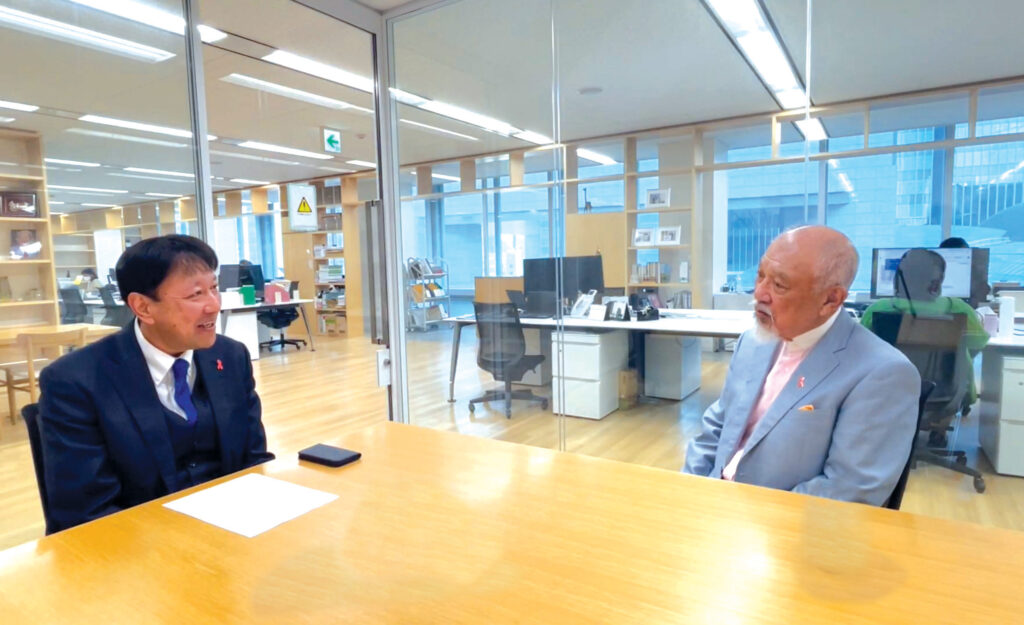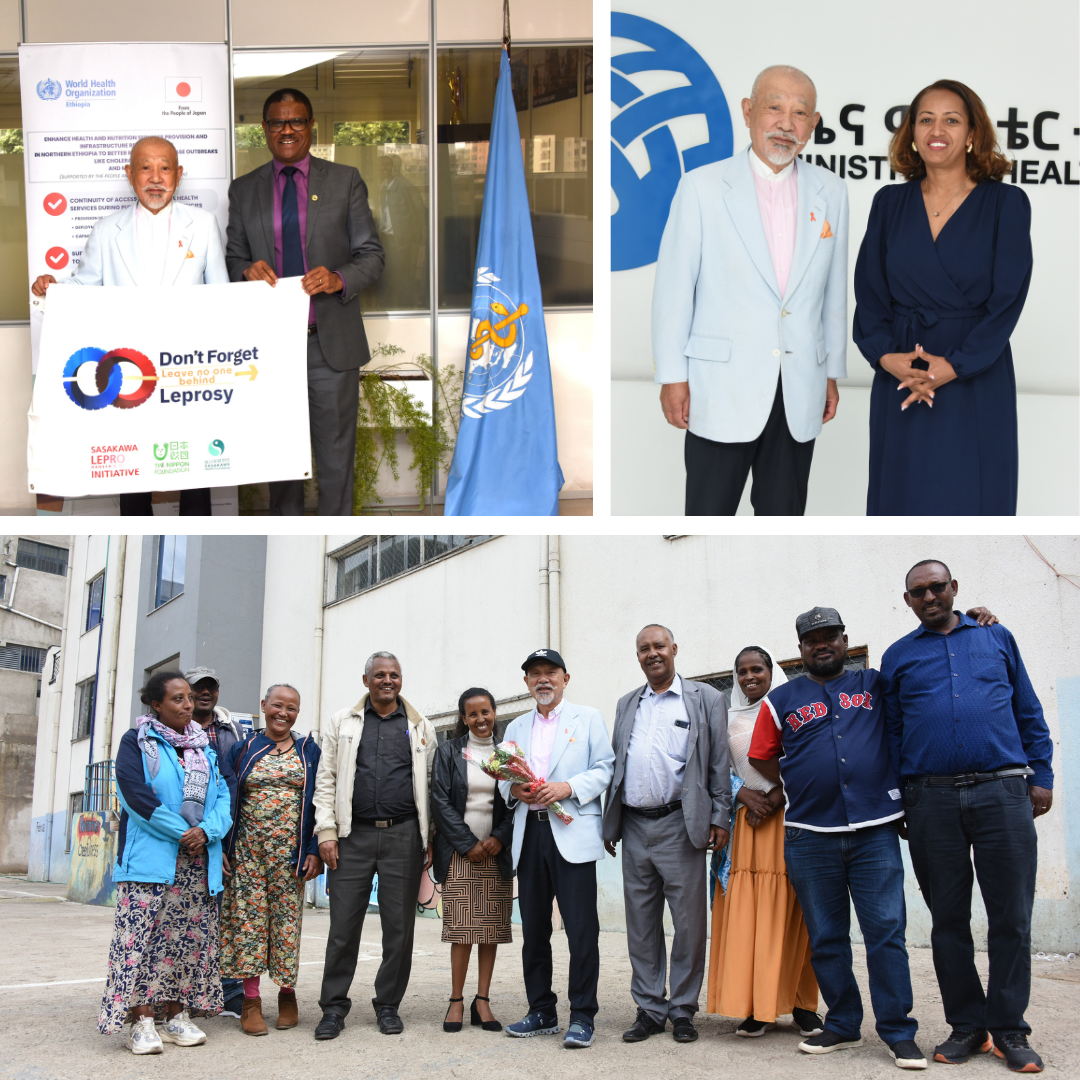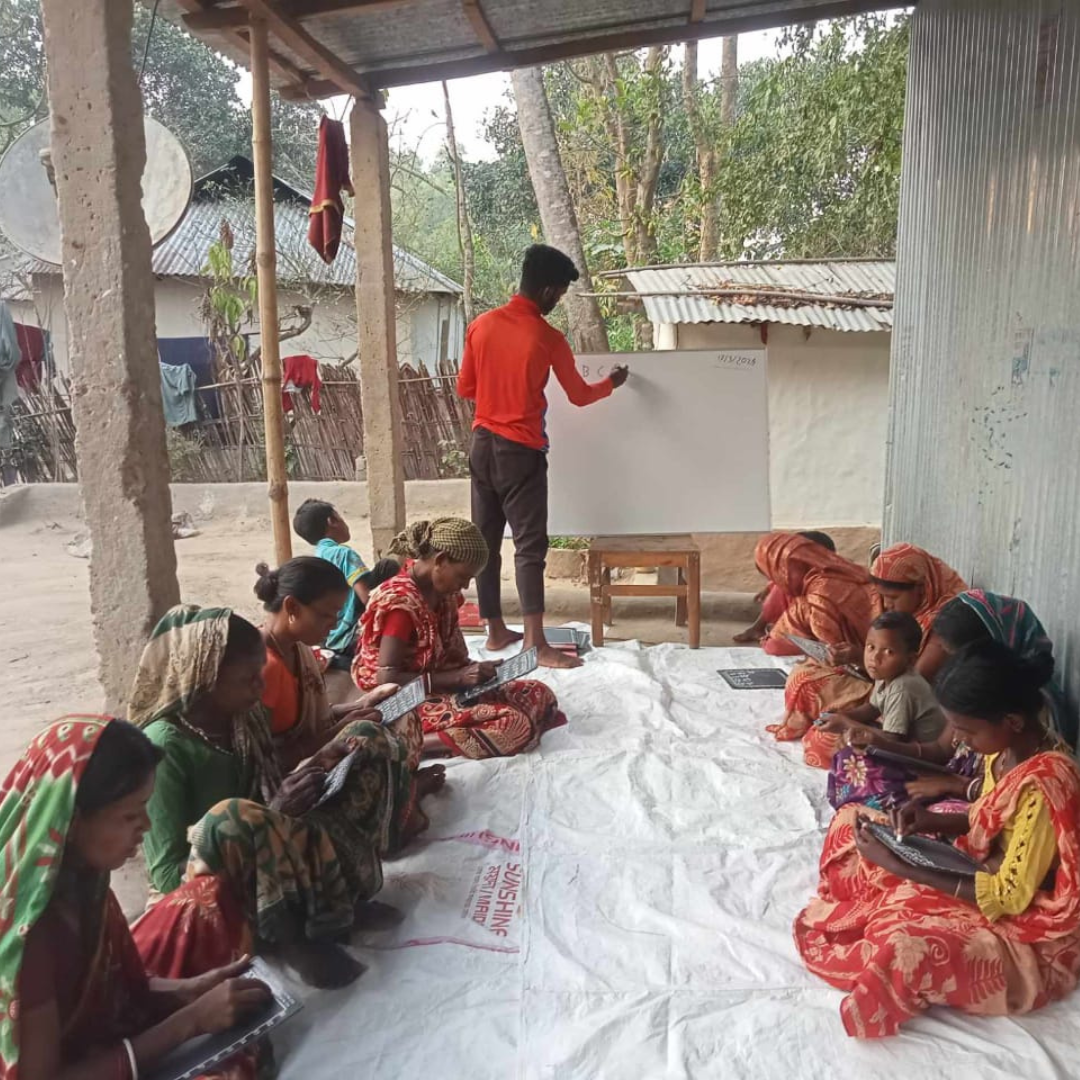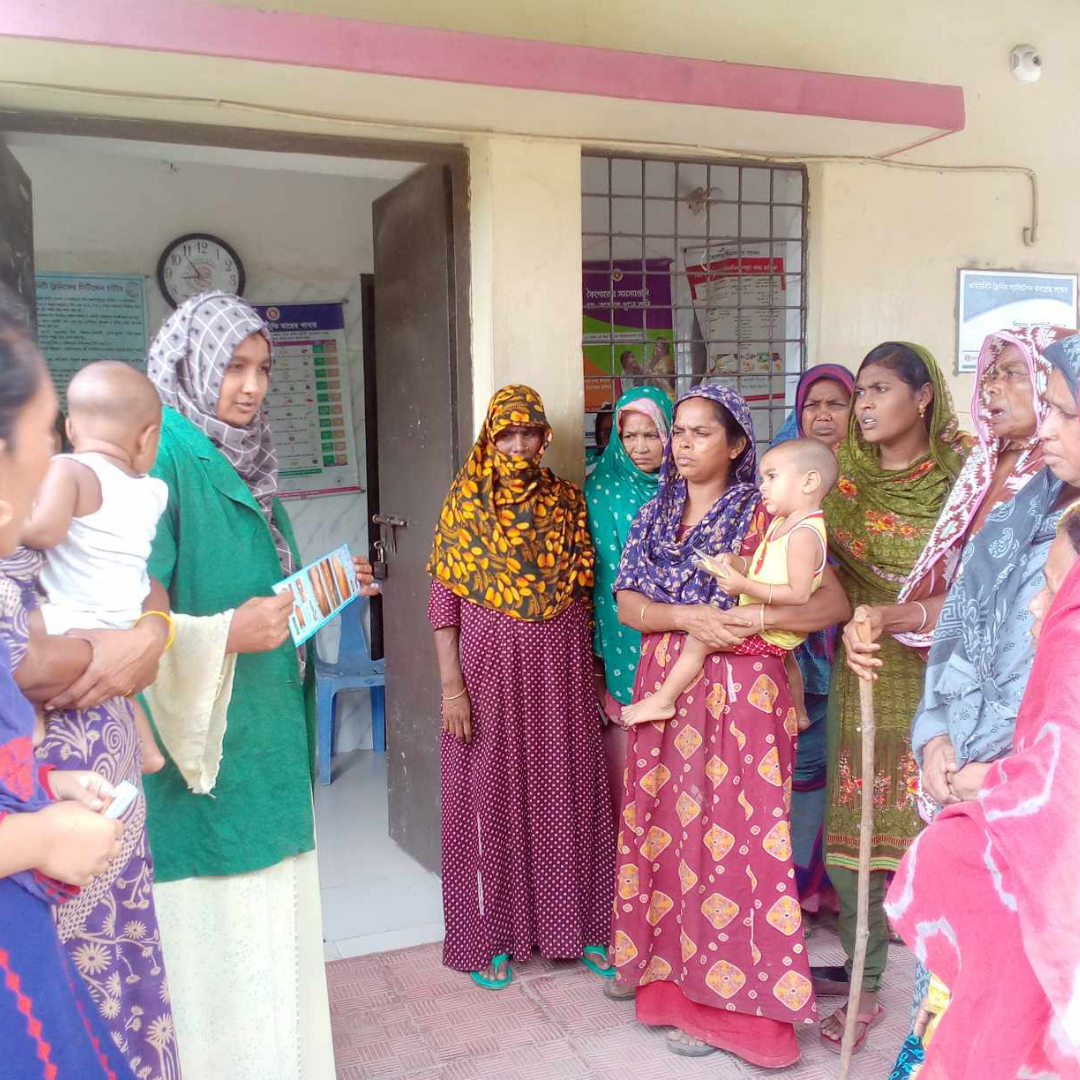On Mar. 26, 2025, Dr. Takahiro Nanri, President of the Sasakawa Health Foundation (SHF), interviewed Yohei Sasakawa, WHO Goodwill Ambassador for Leprosy Elimination and Chairman of The Nippon Foundation (TNF), about the 50 years of partnership between WHO and TNF/SHF.

Dr. Takahiro Nanri: Fifty years ago, The Nippon Foundation (TNF) and the Sasakawa Health Foundation (SHF) began supporting national governments in addressing leprosy as a public health issue through the World Health Organization (WHO). At the time, this approach was unprecedented. What led TNF and SHF to adopt this strategy?
Yohei Sasakawa: The late Ryoichi Sasakawa cared deeply about taking action to reduce suffering caused by leprosy. He recognized that in order to eradicate this kind of problem on a global scale, it would be important to coordinate the effort through WHO.
Also, Dr. Morizo Ishidate, SHF’s first chair, used to say that public health problems could only be solved by working with national governments.
At the time, there was strong suspicion toward working with governments due to corruption. While caution was needed, later developments proved that involving national governments – especially health ministries – was vital in controlling leprosy. Private foundations and other nongovernmental organizations typically have to offer support in a limited way to a certain geographical area or a certain group of people, and they do excellent work this way. But given that TNF/SHF wanted to address the problem of leprosy on a global level, I think that partnering with WHO was the right choice.
Nanri: A 50-year collaboration between a private foundation and a United Nations agency is remarkable. What factors have contributed to the long-lasting partnership between TNF/SHF and WHO?
Sasakawa: To achieve an ambitious goal, one needs passion, the mental strength to overcome challenges, and the commitment to persevere until results are achieved.
On the TNF/SHF side, we have been fortunate in many ways – for example, in the continuity of leadership. Unlike in many organizations where leadership turns over every five or ten years, often accompanied by significant shifts in priorities or policies, our leadership has remained consistent in direction. This does not mean a lack of change or innovation, but rather that a shared long-term vision has been carried forward by successive leaders. This continuity has allowed us to pursue sustained efforts and maintain trust with our partners over time.
Nanri: In addition to your leadership roles within TNF, you have been the WHO Goodwill Ambassador for Leprosy Elimination for over 20 years. Two words that you mentioned – “passion” and “continuity” – seem to be relevant here as well. How have you interpreted the goodwill ambassador role, and why have you stayed so active and committed?
Sasakawa: A goodwill ambassador is typically used by an organization in a symbolic way at tape-cutting ceremonies and so on. I imagined the role differently. I saw the affiliation with WHO as an opportunity to stimulate and promote the organization’s leprosy elimination activities.
Nanri: You are also well known for using your goodwill ambassador role to meet directly with heads of state to bring the matter of leprosy to their attention. Could you tell us about your thinking behind this strategy?
Sasakawa: To get things moving in a society, you need to secure understanding at the top level.
The number of patients affected by leprosy is small compared to that of those affected by diseases such as HIV/AIDS, tuberculosis (TB), or malaria. This means that the government’s budget allocation for leprosy is usually also small. One reason to meet with heads of state is to convince leaders of the need for a larger allocation.
Some top leaders are not aware that leprosy is a problem in their country. My visits are opportunities to raise their awareness.
Nanri: In addition to meeting with representatives of the top level of government, you also insist on visiting areas where leprosy is endemic and talking directly with persons affected by leprosy. Could you share the reasons or context behind your visits to these areas?
Sasakawa: I believe it’s important to see the situation firsthand before making any decisions.
If I only looked at reports in an air-conditioned room, I wouldn’t really understand the seriousness of the situation. To do my work properly, I need to see the conditions that people are living in and how their faces fill with emotion when they speak of their situations. The only way to see this is to go myself.
Nanri: For a while now, it has been said that we are in the “last mile” of the leprosy elimination effort, but we still have not reached the goal. What are some of the remaining challenges?
Sasakawa: As I mentioned earlier, one of the challenges is budget allocation. When governments decide the allocation to fight a disease based on the number of patients affected by it, the allocation for leprosy remains small.
Another challenge is that even in areas where the disease still exists, knowledge and awareness of leprosy are fading. This lack of awareness contributes to lack of action.
In many places in the world, there is also a lingering influence of old ideas that complicates the integration of treatment for leprosy into general healthcare services.
Nanri: We have been talking about leprosy as a medical challenge. TNF/SHF and you personally were also instrumental in bringing attention to leprosy as a human rights issue. How did you come to frame leprosy in this way?
Sasakawa: WHO focuses on curing disease. When I became the WHO Goodwill Ambassador for Leprosy Elimination, “human rights” was not mentioned.
However, when one looks at the situation on the ground, there are many people who have already been cured of the disease but still have disabilities. There are also issues of discrimination, with many discriminatory laws and practices still in place.
United Nations agencies are set up to tackle problems thematically, and so they tend to exist in siloes. The agency that deals with disease is separate from the one that deals with human rights, and so on. Our success in gaining recognition for leprosy as a human rights issue in the United Nations General Assembly has helped to raise awareness that the medical and social aspects of leprosy are interrelated.
Nanri: Driving all of our efforts to eliminate the disease and related discrimination are the people directly affected by it. You have been a pioneer in creating opportunities for persons affected by leprosy to speak out and form their own organizations. What are your thoughts on these people’s organizations and their potential?
Sasakawa: First of all, considering the discrimination experienced by persons affected by leprosy, I think it takes a lot of courage for them to form an organization. These organizations should be seen as part of a quest for human dignity, and it is very important that we support them.
I wish that TNF/SHF could reach all parts of the world to give support to every one of them. Unfortunately, there are some places that we can’t reach. I want them to know that TNF/SHF will continue providing support as best it can.
Nanri: Next, I would like to ask you about the “Don’t Forget Leprosy” campaign, which was launched during the COVID-19 pandemic and is still ongoing. What are your thoughts on this campaign?
Sasakawa: As attention and resources shifted toward COVID-19 during the pandemic, the possibility of leprosy being forgotten increased.
When I recently visited Norway, where leprosy used to be prevalent, people seemed to be surprised by the fact that leprosy still exists. When people don’t meet or see people affected by leprosy as part of their everyday lives, they think that it is a disease of the past.
I value the slogan “Don’t Forget Leprosy” because people who do not normally think about the disease feel startled into awareness that the disease still exists. I hope that this awareness encourages them to learn more and take action.
Nanri: When we launched this campaign, we initially thought it would only be relevant during the COVID-19 pandemic. However, as you pointed out, this is an important message that should be shared at all times.
In closing, I would like to ask one more question.
You have been working on leprosy for a long time, yet there are still unresolved aspects of the issue. What are your thoughts on the future roles of TNF/SHF in addressing this?
Sasakawa: If TNF/SHF doesn’t keep up its efforts, activities for leprosy elimination worldwide will fall apart. I am convinced of this, without a doubt.
I hope these two foundations will continue their work for the next 50 or 100 years, staying true to the vision set by Ryoichi Sasakawa and Dr. Morizo Ishidate. I believe this long-term commitment is key to resolving all the issues associated with this disease.









